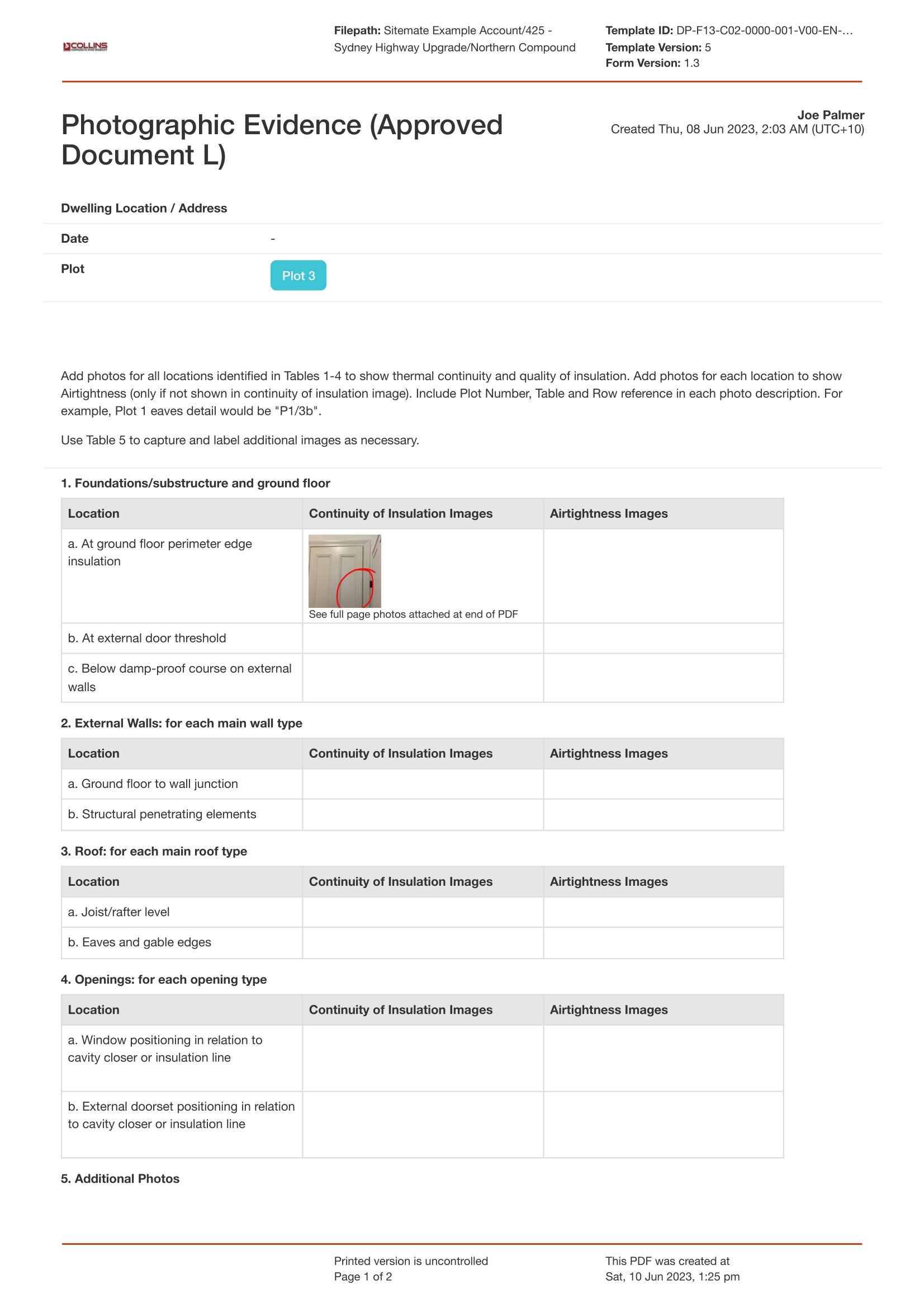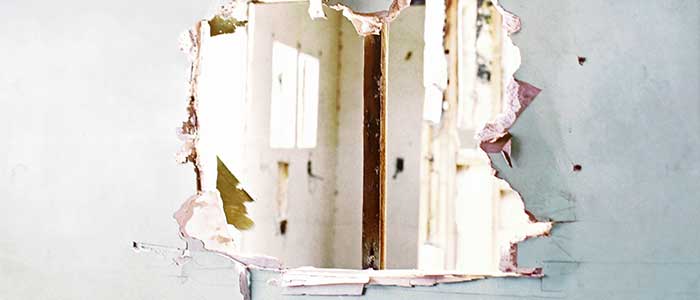Dashpivot article page – Part L Regulations

Part L Regulations and Compliance Guide
Part L regulations explained
Part L of the UK Building Regulations specifically deals with the building’s energy efficiency, the conservation of fuel and power and the reduction of carbon footprint in new and existing buildings to meet UK’s environmental targets. Part L is concerned in the use of renewable energy, and minimising energy usage in insulation, heating, lighting, and ventilation.
The Part L regulations contain the thermal performance (U-values) of walls, roofs, floors, windows, and doors. In the regulation, it is recommended to use components that have low U-values since they offer better insulation while conserving energy. It also indicates that buildings are mandated to be constructed without air leakage. The standard promotes designing homes and buildings that take in natural light to reduce the need of using electricity during the day, or as an alternative, to use LED to reduce electricity consumption. It is also indicated that ventilation systems should be designed to capture and reuse heat from exhaust air
Part L is updated at regular intervals aligning with the targets set by the government concerning carbon reduction and energy conservation. Other purposes include lowering energy bills, and enhancing the comfort and health of occupants.
The regulations within Part L are divided based on the type of building:
-
L1A - New Dwellings: This section is dedicated to the energy efficiency requirements for newly constructed residential buildings. Key elements include:
-
Insulation standards for walls, floors, and roofs.
-
Efficiency standards for heating systems.
-
Requirements for air-tightness to avoid unnecessary heat loss.
-
Limiting excessive solar gains in summer to reduce overheating.
-
Requirements for energy-efficient lighting.
-
-
L1B - Existing Dwellings: This part addresses the conservation of fuel and power when making renovations, alterations, and extensions to existing homes. It's designed to ensure that when changes are made to a dwelling, the energy efficiency of the building does not decline.
-
Like L1A, this encompasses insulation, heating, air-tightness, and lighting standards.
-
Specific provisions are made for historic buildings where certain upgrades may not be feasible.
-
-
L2A - New Buildings Other Than Dwellings: This section focuses on non-domestic buildings that are newly constructed. The criteria cover:
-
Insulation standards for the building's fabric.
-
Efficiency standards for fixed building services like heating, cooling, and lighting.
-
Considerations for systems controls to manage and maintain energy efficiency.
-
-
L2B - Existing Buildings Other Than Dwellings: It pertains to changes in existing non-domestic buildings. The key emphasis is ensuring any building work maintains or improves the building's overall level of compliance with the regulations for energy efficiency.
It's worth noting that as part of compliance with Part L, SAP (Standard Assessment Procedure) calculations are often required for dwellings, and SBEM (Simplified Building Energy Model) or more detailed dynamic simulations may be required for non-dwellings. These assessments calculate the energy performance of buildings.
These regulations have been periodically updated to reflect evolving standards and targets. For instance, updates have been made to align with the UK's commitment to bring all greenhouse gas emissions to net-zero by 2050.
If you're working on a construction project or building renovation in the UK, it's crucial to reference the most up-to-date version of Part L and consult with professionals who specialize in building regulations to ensure full compliance.
How to be part L Compliant?
To ensure new and existing buildings are compliant with Part L regulations, they must fulfill the requirements and standards set for energy efficiency and carbon emissions. Part L 2023 emphasises the use of low-carbon technologies and renewable energy systems, and the integration of both to conserve energy. There are also other things to take note to stay compliant with the 2023 updated Part L regulations.
Regularly read and understand the Part L regulations prior to designing a new building, or renovating and extending an existing one. Familiarise the updates and the key changes for every time an updated version is implemented, and incorporate these changes in your establishments whenever feasible. Perform regular checks, inspections, and maintenance work to ensure all materials and systems are in line with the requirements and standards. Implement the “fabric-first approach”.
The fabric first approach is a designing strategy that emphasises to improve insulation and airtightness of the building’s fabric. Fabric refers to the building’s walls, roofs, and floors. This strategy aims to reduce heat losses and gains, meaning it stays warm in winter and it stays cool in summer. In areas where heat is transferred more quickly like the junctions between walls and floors, and between walls and the roof, implement the fabric-first approach to minimize thermal bridging. Another principle in the fabric first Designers, building owners, and developers should ensure these are taken into account in the designing process before anything is built.
For new buildings, design with efficiency in mind
- Use high quality materials that meet the updated U-values and thermal efficiency standards. Some of the recommended insulation materials are mineral wool, rigid foam boards, natural insulation, and vacuum insulation panels.
- Install materials that ensure airtightness such as vapor control layers, airtight membranes, airtight tapes, acrylic sealants, and foam insulations.
- Maintain the indoor air quality of the building by installing a Mechanical Ventilation with Heat Recovery (MVHR) system that uses a heat exchanger to recover the heat extracted from the damp air, and transfers it into the new fresh air coming from outside.
- Integrate low-carbon heating systems such as air source heat pumps, ground source heat pumps, solar thermal panels, and underfloor heating.
- Integrate renewable energy systems such as solar photovoltaic (PV) panels, solar tiles, and battery storage systems. Lessen the reliance on grid power to save money and energy. Utilize these eco-friendly alternatives to meet carbon reduction targets.
- Future-proof your designs. Don’t just design for compliance but ensure that the designs are prepared to comply and adjust accordingly with stricter rules and regulations. Carbon reduction goals might change overtime, likely making requirements and regulations stricter overtime. Design with future-proofing in mind.
- Test for air tightness, inspect buildings, and conduct maintenance checks regularly in your establishments. Ensure that they comply with the regulations and if not, immediately replace these items. Follow Standard Assessment Procedure (SAP) calculations.
- For existing buildings, renovate and extend with efficiency in mind. Follow the same procedure for designing new buildings. All renovations and extensions must comply with the updated Part L regulations. Future-proof these areas ahead to comply with any changes of the regulations in the coming years.
- Install low-carbon technologies and renewable energies as replacements for the traditional fossil fuel systems such as gas boilers. These alternatives reduce the demand for energy and carbon emissions aligning with the standards set in Part L 2023. Ensure that these installations are certified by the Microgeneration Certification Scheme (MCS) or any other recognized bodies.
- Integrate low-carbon technologies and renewable energy systems to lessen energy consumptions in buildings. Optimize the integration of these systems by preparing the building’s fabric and considering the roof’s and site’s design and orientations, and many more. Plan ahead of time and design to accommodate the specifications of the technologies and systems to avoid any more unwanted additional costs in the future.
- Install energy-efficient lighting and smart controls in your buildings to reduce energy consumption. The idea is to provide high light output with low energy usage. Lighting technologies, like LED, have a longer lifespan compared to traditional incandescent lighting. Use smart controls to automate the lighting use in buildings, and at the same time monitor energy usage.
The overall idea of staying compliant is to actively read the regulations, inspect and make sure the entire fabrics, technologies, and systems have specifications that meet the standards, consciously design a space that has less to zero impact on the environment, and evaluate whether the company has aligned goals with the government. Create a mindset that aims for energy efficiency, smart designing, diligent compliance, and sustainable living.
Developers, building managers, inspectors, and anyone involved need to record energy efficiencies, regular inspections, maintenance checks, tests, and document how your construction stages are meeting your energy efficient designs by using a Part L compliance document, air permeability test documents, heat pump equipment forms, boiler maintenance forms, solar PV forms, accredited construction documents, and many more.
In the 2023 update for Part L, builders and developers are required to take photographs for Part L evidence of any installation for compliance. These photos confirm that the design details have been followed and these are strictly implemented in the Part L 2023 regulation. Photos are also required to be geotagged to verify the correct location of the construction site. Use a Part L Photographic Evidence document to comply with the new regulations and use that as a form of proof that the required measures have been implemented during construction or renovation.
Part L Compliance Guide
A Part L compliance guide outlines the stages of complying with Part L and the necessary requirements in each stage. A guide is essential in ensuring that new and existing buildings comply with and most importantly meet the energy efficiency standards laid out in Part L regulations. This guide provides instructions on the requirements architects, builders, and developers should comply with to make sure that they understand the legal obligations their roles partake in.
What are the Steps & Requirements to Achieve Part L Compliance?
In the design stage, it’s important that the standards for insulation, heating systems, and renewable energy sources in both dwellings and non-dwellings are familiarized and achieved. Specify the construction materials that generate less heat loss in the building walls, roofs, floors, and windows, and support airtightness. It should be ensured that they at least meet the minimum standards indicated in Part L. Also ensure that the heating and cooling systems are rated under the Energy-related Products (ErP) Directive, and that lighting solutions and renewable energy sources are efficient and up-to-standard with Part L. Consider designing with future-proofing in mind just in case Part L will be upgraded in the future. It’s also helpful for instances where it’s necessary to upgrade the equipment and systems. Replacement should be made easy to avoid unnecessary costs. Use tools like the Standard Assessment Procedure (SAP) for dwellings and Simplified Building Energy Model (SBEM) for non-dwellings. During the design stage, the design plans should be approved by the Building Control Authority so that if there are any compliance issues, they will be actioned promptly and the architects and designers will redesign the building structure, use other materials, or use other equipment.
In the construction stage, the approved and correct materials, techniques, designs and specifications should be followed through. Also confirm that the HVAC and renewable energy systems are installed correctly according to the approved design, and manufacturer’s specifications. Documenting and keeping records of any construction process is crucial in this stage. Document the practices, materials used, installation, and any changes from the approved design. Compliance certificates should also be obtained, filed, and kept. Conduct regular inspections during the construction process and immediately address issues should they arise.
For the post-construction stage, make sure to verify that the completed building meets the energy efficiency standards indicated under Part L. Ensure that the EPC calculation is based on data gathered from the finished building and obtain an Energy Performance Certificate (EPC). Conduct an air tightness test to see how the finished building prevents uncontrolled air leakage and if that meets the minimum air permeability standards in Part L. Test and commission the HVAC systems and renewable energy sources to see if they’re operational and compliant with Part L. Obtain a Building Control Completion Certification that confirms the building meets the requirements as indicated in Part L regulations.
What are the tools and resources needed for Part L compliance?
There are many tools and resources being used for Part L compliance. It’s important to make sure that they are approved and certified by the UK government or recognized bodies. The UK government has provided a list of software and methodologies that developers, builders, architects, designers or anyone involved should use. Even for testing equipment, they should be certified by regulatory bodies. For energy assessors who perform calculations, they should also be accredited by the UK government and can issue valid certifications. It’s important to stay updated with any of the regulatory changes since the Building Regulations (including Part L) are regularly updated.
Here is a general list of the tools and resources needed for Part L compliance:
Software tools for energy performance modeling:
-
Standard Assessment Procedure (SAP)
-
Simplified Building Energy Model (SBEM)
-
Software solutions, design & testing software
Approved documents and standards for reference:
-
Approved Document L (AD L)
-
Energy Performance Certificates (EPC)
-
Non-Domestic Energy Performance Certificates (NDEPC)
-
National Calculation Methodology
-
BS EN 12831:2017 (Heating Systems in Buildings)
-
BS 5250:2021 (Control of Condensation)
-
BS EN ISO 6930:2017 (Building Components and Elements)
-
CIBSE Guides and Technical Memoranda
-
Building Research Establishment Environmental Assessment Method (BREEAM)
-
Local Planning & Zoning Policies
Professional roles in compliance:
-
Architects
-
Energy Assessors
-
Building Control Officers
What is a Part L checklist?
A Part L checklist outlines the regulations in detail and contains a list of items that inspectors run through during an inspection to verify that the building meets the required energy efficiency standards.
Here are some examples of Part L checklists:
Insert ACD checklists
Insert Part L Inspection Form
Insert Part L Building Compliance Form
Insert Part L As Built Checklist
Part L Compliance guide in relation to your Photographic Evidence requirements
Ensure your compliance with Part L regulations by taking Photographic Evidence at each stage of the design and construction process.
Missing taking photographic progress can be extremely costly, as you might have to deconstruct and then re-do work showing that you're meeting the design specifications.
See a Part L Photographic Evidence Report example below to see how you can fill out your report.

Use & customise this digital Part L Photographic Evidence document
Manage your Part L Photographic Evidence digitally
Use a digital Part L Photographic Evidence template to help your team keep track of photo requirements with all the information you need for every step.
The template comes standardised with all the fields you need to track date, location, stage, photos, signoff, attachments and more.
Attach photos and videos directly to the report with timestamps, geotagging, smart tags and markup to highlight important information.
Build signoff automation into your process with workflows to ensure your Part L requirements are being followed properly.
Integrate your Part L Photographic Evidence processes
It can be easy to miss taking your Part L Photographic Evidence at every required step of your project.
A dedicated Part L Photographic Evidence app can help your team access existing reports or record new reports on site via their mobile or tablet, so they don't have to take photos on site, then go into the office to finish the report.
Build automated workflows for requesting, recording and signing off on your photographic evidence needs for each step.
Ensure you're meeting compliance needs with a detailed audit log, showing historical changes and with user management to allow access to who needs it.
Share your completed Part L Photographic Evidence report with auditors or other 3rd parties simply in 1 click, as professionally formatted PDF or CSV.

Inspection and Test Plan (ITP) template
No one plans to fail, they fail to plan. Ensure your projects are a success with this ITP.

Non-Conformance Report template
Document those painful non conformances with this powerful template.

Construction Punch List template
Punch your way through those punch lists with this powerful template.


